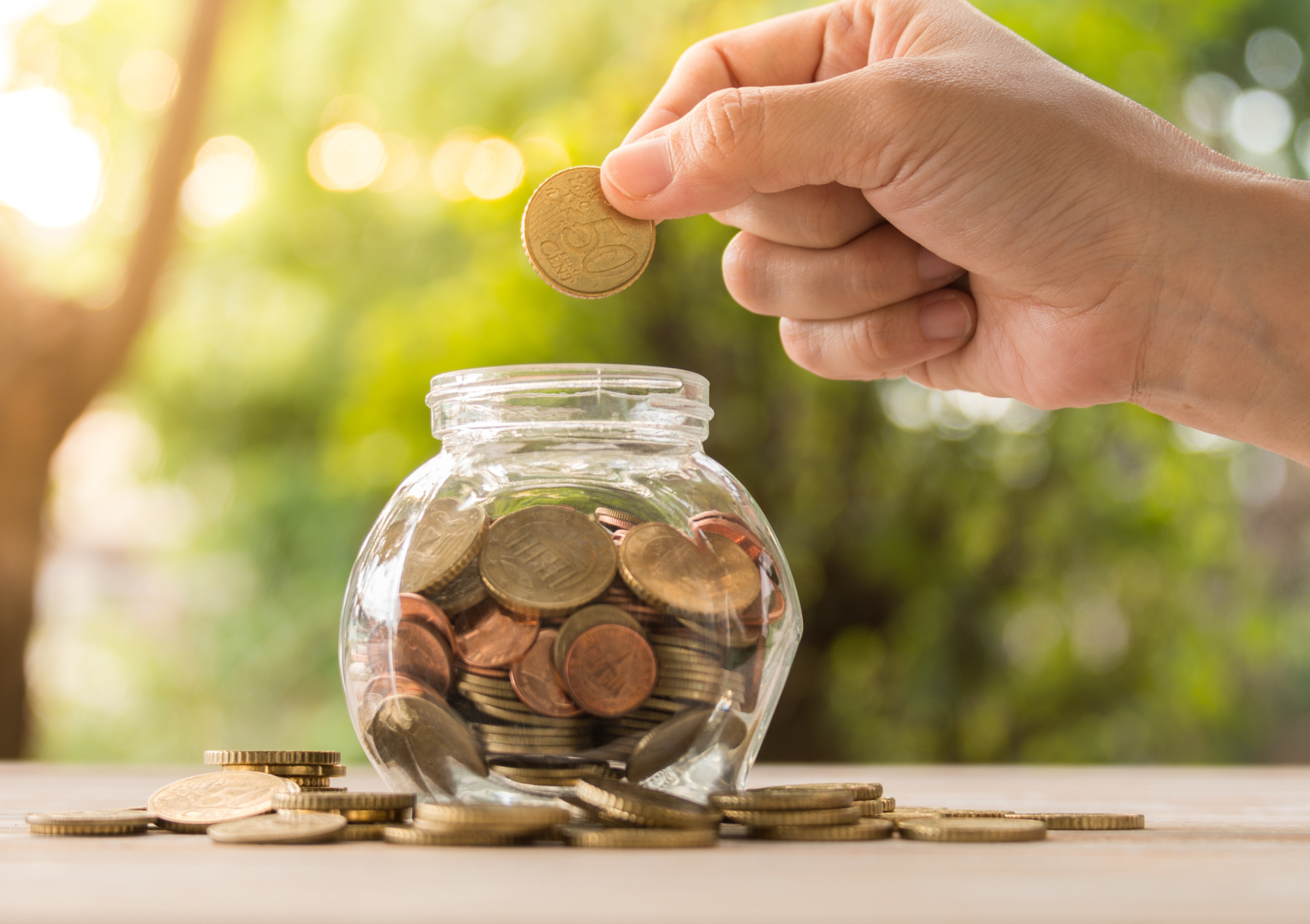In this article, we’ve gathered eighteen unique money-saving hacks from a diverse group of professionals, including Founders and CEOs. From the clever use of library memberships for book lovers to the savings through subscription shuffling, these experts share their personal tips to help you save money in ways you may not have considered before. In this story, 18 readers share their best tips.
EARN RECOGNITION: Nominate today for the 2024 Champions of Change Awards
- Reduce Book Expenses With Library Memberships
- Earn Cash Back With Reward Apps
- Gain Credit Card Points and Use Rakuten Cash Back
- Use the Envelope Method for Budget Control
- Practice a No-Spend Month
- Invest Excess Savings in Stocks
- Save Money With Smart Home Energy Management
- Cut Costs With Free Software Alternatives
- Maximize Savings With Digital Coupon Stacking
- Fill Prescriptions at Warehouse Retail Stores
- Control Spending With Future Value Assessment
- Avoid Impulse Purchases With the 72-Hour Rule
- Schedule a Call Day to Lower Bills
- Designate Four No-Spend Days Each Month
- Buy in Bulk to Save Money
- Treat Savings Like a 401K Deduction
- Ensure Consistent Saving With Automated Savings Transfers
- Shuffle Subscriptions to Save on Streaming Services
Reduce Book Expenses With Library Memberships
If you are like me, who spends an exorbitant amount on books, this hack will help. Getting a membership card to your local library will help you save money without giving up your favorite pastime.
This practice also helped me wean off the tendency to buy books but not read them. With borrowed books, I am more productive as I almost have a deadline to finish the book.
Siva Mahesh, Founder and Finance Expert, Dreamshala
Earn Cash Back With Reward Apps
One of my favorite and more unique money-saving hacks is to use reward apps whenever I shop to earn cash back.
Plenty of apps pay you with cash back or free gift cards when you shop for grocery items and everyday essentials. For example, both Fetch and Ibotta let you earn rewards for buying thousands of different products from partner brands. All you have to do is shop for specific products and then take a photo of your shopping receipt with each app to earn cash back.
You can also use apps like Upside to earn cash back when you purchase gas at thousands of participating gas stations in the United States. Once again, you simply shop and take a photo of your receipt with the app to earn.
These types of cash-back apps can realistically pay you a few dollars each, depending on how often you shop. Over the course of the year, these savings can add up, and reward apps are also incredibly easy to use and implement into your shopping habits.
Tom Blake, Founder, This Online World
Gain Credit Card Points and Use Rakuten Cash Back
I have two money-saving hacks that I use:
1) I use my credit card points to get gift cards directly from my bank’s site, which comes in handy for the holidays.
2) I use Rakuten cash back when shopping online. It’s free to sign up; you install a plugin on your computer, and when you visit a retailer, say Target for example, the Rakuten pop-up window is displayed. You hit “Save 2% Cash Back.” Once you make a purchase, it’s tallied in your Rakuten account, and it notifies you once you’ve gained $10. It’s super simple and easy to use; everyone should use this.
Brittney Mesa, Travel Blogger, Asem Studios, LLC
Use the Envelope Method for Budget Control
I used the envelope method in college when I was always eating out and couldn’t stick to a budget. It helped me save almost $1,000 every month.
The envelope method works like this: You withdraw all the money you plan to spend this month from your account and split it into several envelopes titled “rent,” “food,” “dining out,” etc. Whenever you go out, you can only use this cash; you cannot use your card.
This method works well because research shows people spend more money when using a card than cold, hard cash.
Scott Lieberman, Owner, Touchdown Money
Practice a No-Spend Month
Having a “no-spend” month is something I have tried, and find that it really helps when you are trying to save money, especially in the short term. Every few months, I ensure I’m not making any impulse purchases and only pay for the necessities.
By doing this, I can save money I might not otherwise have, as it could be spent on going out to eat, clothing, or other unnecessary purchases.
I find this to be one of the better money-saving hacks because it’s temporary, which makes it much easier to follow through with. You also realize how much money you might actually waste, and it helps you to eventually build better savings habits.
Michael Charalambous, Director, Invezz
Invest Excess Savings in Stocks
My unique money-saving hack is putting my excess savings in my secondary stock market account. “Excess savings” means my “needs” or non-discretionary expenses, such as food, mortgage payments, and utilities, are already paid.
In that way, I can prevent myself from purchasing my “wants,” like entertainment and recreational expenses. Not only did I save myself from unnecessary purchases, but I also put my money into an investment that can generate capital appreciation and dividends.
It should be noted that this money-saving hack started when I built up my emergency fund, allowing me to explore savings and investments at the same time.
Lorenzo Nourchan, CEO, Northstar Financial Consulting Group
Save Money With Smart Home Energy Management
Using a smart-home energy-management system is one novel method I’ve used to save money. I wired in thermostats, light switches, and power strips that can be managed from afar with an app on a mobile device.
In response to changes in occupancy and time of day, these gadgets can change their settings to save energy use. By turning on lights and appliances just when necessary and keeping the house at the ideal temperature, they have drastically lowered my monthly energy expenses. This tip not only helps you save cash, but it also helps you live a greener, more sustainable life.
Derek Bruce, First Aid Training Director, Glasgow First Aid Courses
Cut Costs With Free Software Alternatives
The unique money-saving hack I’ve used is using free software alternatives. In this generation, it’s no longer necessary to subscribe to TV channels just to watch the news; you can watch it for free using social media applications.
This reduces your costs by eliminating one of your expenses, your TV subscription. This also applies in the digital landscape, where you can install a free web browser that offers ad-block features, such as Brave Browser, instead of subscribing to a similar premium service.
With this money-saving hack, you’ll open your mind to rational spending. There are many free software alternatives available online; you just need to do your own research and you’ll be one step closer to reducing your subscription expenses. It’s about saving your hard-earned money by using free applications to your advantage.
Tim Sutton, Director, Coffee Geek
Maximize Savings With Digital Coupon Stacking
A novel money-saving technique called digital coupon stacking can be employed. To maximize savings when shopping online, this method involves combining various digital discounts, promo codes, or rebate offers. Start by looking for applicable discounts and offers on different store apps or discount websites.
Then strategically apply these discounts at checkout to stack them. For instance, using a cash-back rewards credit card to pay and combining a 20% off coupon with a $10 cash-back offer from a cash-back website can be done.
Significant discounts and cashback on the same transaction can be achieved with this method. It’s a clever strategy for maximizing online purchasing and keeping more cash in your pocket.
Perry Zheng, Founder and CEO, Pallas
Fill Prescriptions at Warehouse Retail Stores
Fill your prescriptions at a warehouse retail store such as Costco, Sam’s Club, or BJ’s. These discount stores usually have much better prices on prescriptions than popular pharmacies such as Walgreens, CVS, and Rite Aid.
At Costco, you don’t even need to be a member to get affordable prescriptions. Next time you need a refill, have your doctor find the nearest warehouse retail store for you.
Andrew Meyer, CEO, Arbor
Control Spending With Future Value Assessment
I have always been a big spender, but also an optimizer. A strategy that has significantly helped me rein in my expenditures is what I term the future value assessment.
Prior to making any major expenditure, I estimate the potential growth of that amount if it were invested for a decade. For example, before buying a new tech accessory, I ponder, “If I put this $1,000 into an investment today, it might increase to $2,000 or beyond in 10 years.”
This approach has shifted my focus from the pleasure of buying to the pleasure of optimizing.
Domenico Trimboli, Freelancer and Business Owner, Domenicotrimboli.com
Avoid Impulse Purchases With the 72-Hour Rule
One unique money-saving hack I swear by is the 72-Hour Rule. Whenever I’m tempted to make an impulse purchase, especially for something pricey, I wait 72 hours. If I still want it after three days, I go for it.
More often than not, the urge passes, and I’ve saved myself from an unnecessary expense. I then take the money I would have spent and put it in savings. I save about $5,000 a year this way and don’t feel like I am depriving myself. It’s a great way to stay laser-focused on your budget and priorities.
I often let salespeople down—they still try with the “if you walk away, you lose the great deal” pitch. It’s almost fun seeing how hard they will try to sell you. 🙂
Erin Hybart, Blog Manager, ReErin.com
Schedule a Call Day to Lower Bills
Schedule an annual or quarterly “Call Day.” Many fixed expenses aren’t as fixed as we think, so spending at least one afternoon every quarter examining that spending and calling providers to lower bills can be beneficial.
Internet and phone providers are notoriously bad at informing you when newer, better offers come up that you can take advantage of and use. However, a phone call has, more often than not, helped save significantly.
Even if an offer is “introductory,” it can often be extended beyond its limits by citing loyalty as a reason to save. As long as interactions with the support team are kind, respectful, and reasonable, many providers will use their wiggle room to give a little discount—and that extra money in your pocket can be spent or saved however you like!
David Janovic, Founder and CEO, RJ Living
Designate Four No-Spend Days Each Month
I use the no-spend day method to help me spend less and save more. On average, Americans spend at least $165 per day.
This includes expenses you cannot eliminate, such as housing expenses and cell phone bills, and about $40 in non-essential spending, like meals at restaurants and entertainment.
You can save $40 weekly, which adds up to $160 monthly. If you’re consistent, those four no-spend days could give you thousands of dollars you can use in retirement.
Young Pham, Founder and Project Manager, Biz Report
Buy in Bulk to Save Money
Saving during times of inflation has been a daunting task. However, I somehow did so by applying some real-life money hacks. I started buying items in bulk. For instance, in a local wholesale hypermarket, I opted for items that were bundled up and tagged at a lower price.
I made sure not to stock perishable items, so I chose non-perishable items with affordable price tags. Trust me, this has been a great hack and has saved me enough money from buying just one product from a retail store. I put that saved money in my savings jar. Just keeping track of your savings also aids in saving money.
David Morneau, CEO and Co-Founder, Breeeze
Treat Savings Like a 401K Deduction
Saving money is something that everybody thinks about, but few people really talk about it. There is a stigma around “needing” to save money. You don’t really ever hear wealthy people talk openly about saving money. They may mention their investment portfolio or money-market accounts might come up in a conversation, but not how they got to this point.
As an entrepreneur, it’s been challenging to save. It’s often easier when you work for somebody who’s putting some of your money in your 401K every month before you see the check. When you pay yourself, it’s a little harder. The money earmarked for savings doesn’t get put into the business with a promise to pay back next month.
The savings money is treated like an employer treats your 401K money. A set amount is deducted before paying each month. If that means some months are a little tighter than others, that’s okay. This entrepreneur life is for the long haul.
Francois Gouelo, Co-Founder and CEO, Enso Connect
Ensure Consistent Saving With Automated Savings Transfers
One money-saving hack is “automated savings transfers.” This involves setting up automatic transfers from your checking account to your savings account regularly, typically right after you receive your paycheck.
By automating your savings, you ensure that a portion of your income is consistently set aside for savings goals, such as an emergency fund, retirement, or a specific financial goal like a vacation or a down payment on a house. This hack is unique because it takes advantage of the principle of “pay yourself first.”
This method is effective because it eliminates the temptation to spend money that you intend to save. Over time, these automatic transfers accumulate, helping you build a substantial savings cushion without having to think about it regularly.
It’s a simple yet powerful way to prioritize saving and ensure that you’re consistently working toward your financial goals.
Mahesh Kumar, Spokesperson, Transcription Certification Institute
Shuffle Subscriptions to Save on Streaming Services
One unique money-saving hack I’ve employed is the Subscription Shuffle. Instead of paying for multiple streaming services year-round, I strategically rotate subscriptions based on content release schedules.
For example, I’ll subscribe to a streaming platform when my favorite series or shows are scheduled for release, then cancel it once I’ve caught up. This way, I can fully enjoy a wide range of content while keeping my monthly expenses in check.
Gabriele Asaro, SEO Executive, Clash.gg




